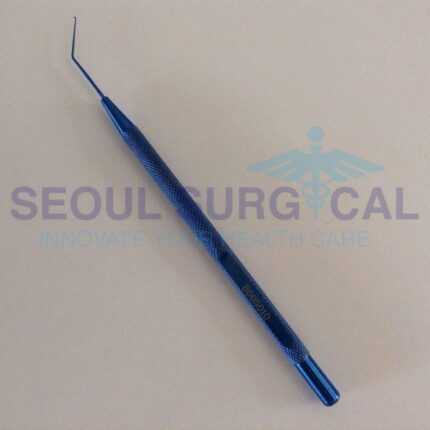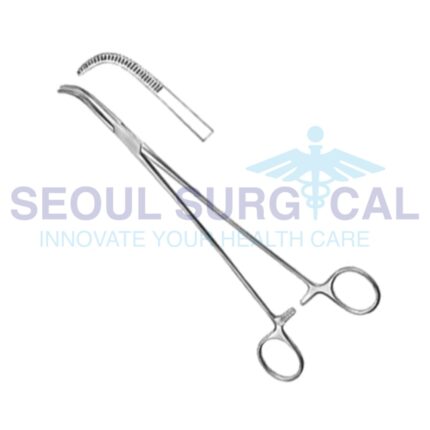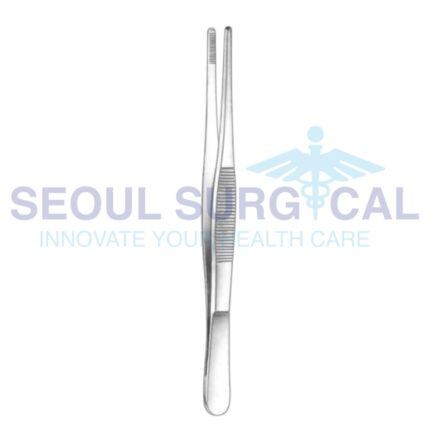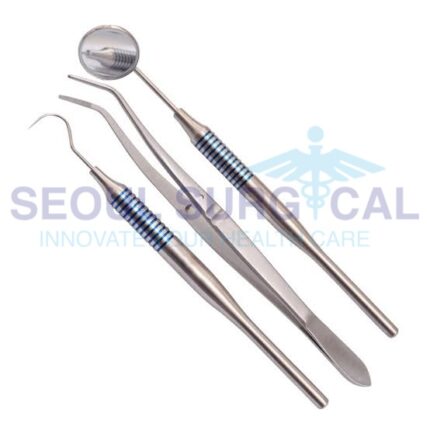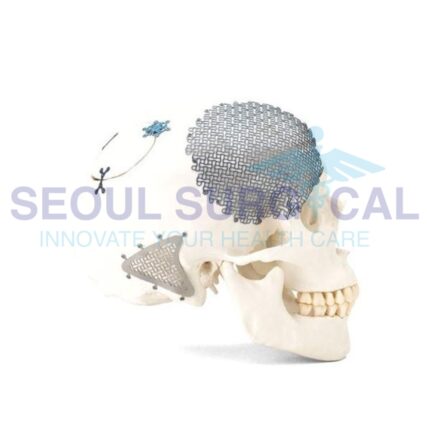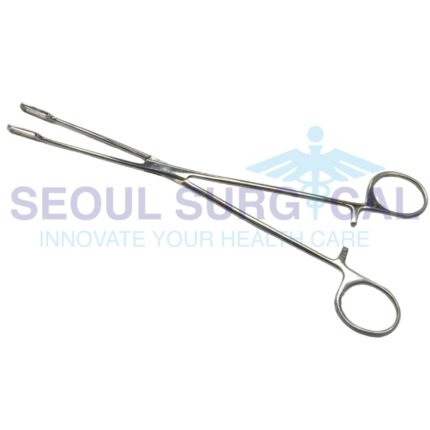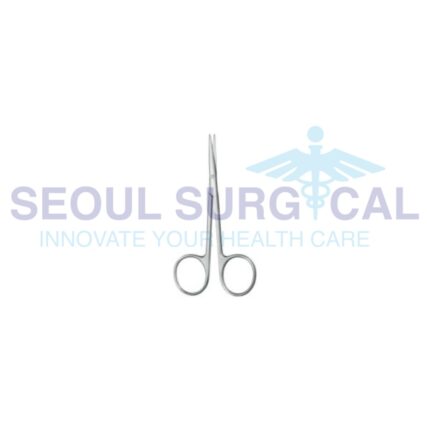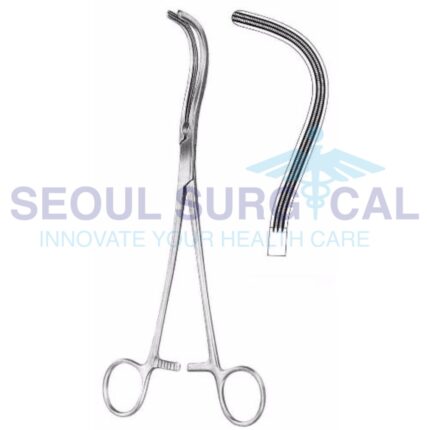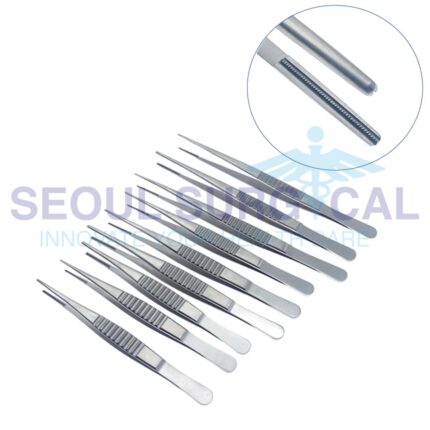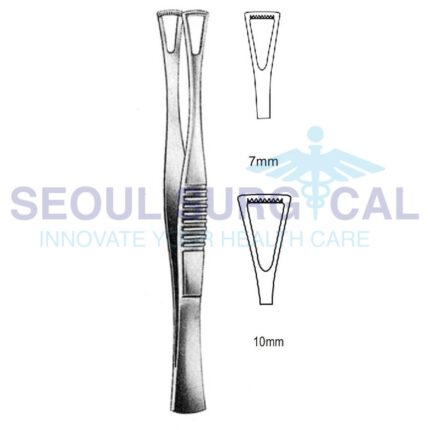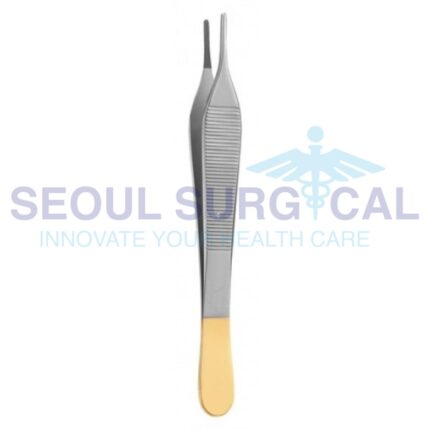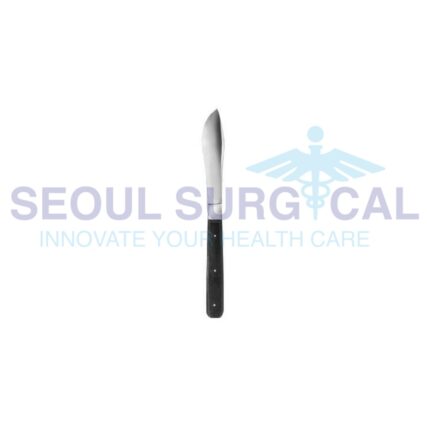Essential Tools for Optimal Visualization: A Handbook of Retractors
Retractors are critical tools in various surgical specialties, and the choice of a retractor depends on the specific requirements of the procedure, the anatomy of the surgical site, and the surgeon's preferences. Proper use of retractors helps ensure a clear surgical field, optimal exposure, and precise surgical maneuvers.
Essential Tools for Surgical Exploration: A Handbook of Probes
Surgical probes are essential tools that aid in the accurate diagnosis, exploration, and treatment of various medical conditions. The choice of a probe depends on the specific surgical procedure and the area of the body being addressed. Surgeons and healthcare professionals use probes with precision to ensure optimal outcomes and patient safety.
Essential Tools for Wound Management: A Handbook of Dressing Forceps
Dressing forceps play a crucial role in maintaining aseptic conditions during medical procedures, especially during wound dressing changes. They are used by healthcare professionals in various specialties, including general surgery, orthopedics, dermatology, and wound care. Proper handling and sterilization of dressing forceps are essential to prevent infections and ensure patient safety. The choice of dressing forceps depends on the specific requirements of the procedure and the preferences of the healthcare provider.
Examining Excellence: Navigating the World of Gynecology Instruments in Women’s Care
These instruments are used by gynecologists and other healthcare professionals to perform various diagnostic and therapeutic procedures related to women's reproductive health. It's important to note that the choice of instruments depends on the specific procedure, patient needs, and the preferences of the healthcare provider.
Facial Harmony: Navigating Cranio Maxillofacial Surgery for Patient Well-being
Cranio-maxillofacial surgery is a multidisciplinary field that often involves collaboration between cranio-maxillofacial surgeons, plastic surgeons, oral and maxillofacial surgeons, neurosurgeons, and other specialists. The goal is to improve both the functional and aesthetic aspects of the craniofacial region. Surgical planning is typically based on thorough diagnostic assessments, including imaging studies such as CT scans and 3D facial analysis.
Fine Control in Gynecology: A Comprehensive Guide to Hysterectomy Forceps
It's important to note that the specific forceps used during a hysterectomy may vary based on the surgical approach (abdominal, vaginal, or laparoscopic) and the surgeon's preference. Each type of forceps serves a specific purpose in tissue manipulation, hemostasis, and organ removal during the procedure. Surgical instruments used in hysterectomy procedures are typically made of high-quality materials, such as surgical stainless steel, and are designed to withstand repeated sterilization.
Fine Control in Nasal Surgery: Utilizing Sinus Forceps for Optimal Results
The choice of sinus forceps depends on the specific sinus involved, the nature of the procedure, and the surgeon's preferences. These instruments play a crucial role in sinus surgery, helping to improve sinus drainage, alleviate symptoms, and treat various sinus-related conditions. Surgeons use sinus forceps with precision to navigate the complex anatomy of the nasal sinuses and achieve optimal outcomes for patients.
Fine Control: The Art and Application of Dissecting Ligature Forceps in Surgical Procedures
These forceps are typically made of high-quality surgical stainless steel, and they undergo sterilization before use in surgical procedures. The choice of dissecting ligature forceps depends on the specific surgical or dissection task at hand, the size of the tissues being manipulated, and the surgeon's preference. The delicate design of these forceps allows for precise and controlled tissue handling during intricate surgical procedures.
Fine Detailing: The Art and Functionality of Atraumatic Micro Forceps
These forceps are typically made from high-quality materials such as stainless steel and are designed to withstand repeated sterilization for use in aseptic surgical environments. Surgeons use atraumatic micro forceps to ensure minimal tissue damage during delicate procedures, such as those in ophthalmology, neurosurgery, and plastic surgery, where precision and gentle tissue handling are crucial for successful outcomes.
Fine Detailing: The Art and Science of Utilizing Cilia Forceps in Surgery
If you have a specific context or application in mind, it would be helpful to provide more details for a more precise answer. Surgical instruments are often designed with specific tasks and tissues in mind, and the choice of forceps depends on the nature of the procedure and the tissues being handled.
Fine Dissection: The Art and Science of Using Specialized Dissecting Forceps
The selection of dissecting forceps depends on the specific surgical or dissection task at hand, the size and type of tissues being manipulated, and the surgeon's preference. Dissecting forceps are typically made of high-quality surgical stainless steel and are subjected to sterilization processes before use in surgical procedures to maintain aseptic conditions.
Fine Edges, Fine Surgeries: Exploring the Latest in Surgical Scalpel Technology for Urology
It's important to note that the proper handling, sterilization, and disposal of surgical scalpels are crucial for maintaining a sterile surgical environment and preventing the spread of infections. Surgeons and healthcare professionals choose the appropriate type of scalpel based on the specific requirements of the procedure and the characteristics of the tissues being incised.

